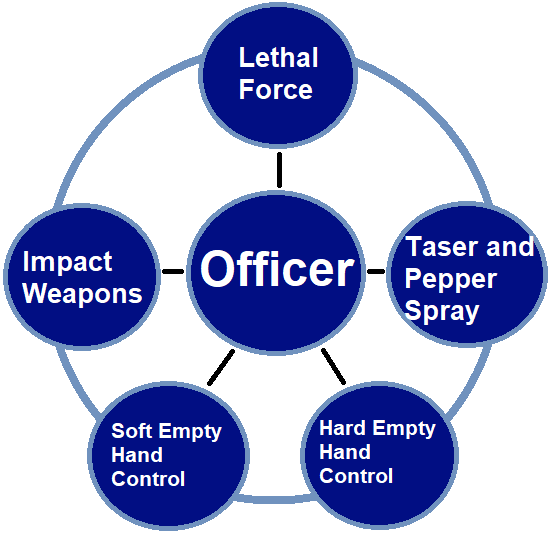LAFAYETTE, La. (KLFY) — The Lafayette Police Department has just released its new use-of-force rules, which now mirror the 8 Can’t Wait reform campaign.
Download and read the entire press release below (Microsoft Word file):
According to the press release, the reforms were brought to Lafayette Consolidated Government Chief of Minority Affairs Carlos Harvin by two Lafayette lawyers, Xavieria Jeffers and Faith Flugence. The release states Harvin then spearheaded a committee to address Lafayette Police Department’s use-of-force policy.
The committee includes Harvin, Interim Police Chief Scott Morgan, Services Captain Brad Ridge, Training Director Sgt. Toby Delahoussaye, Harvin, Flugence, Jeffers, and community member Alzina Dural.
The new policy addresses the eight policy recommendations from the 8 Can’t Wait initiative. Here are some of the highlights:
1. Ban Chokeholds and Strangleholds
New policy bans intentional chokeholds and neck restraints except in the case of reasonable use of deadly force in the defense of human life and never as an effort to recover ingested evidence.
2. Require De-escalation
While de-escalations techniques weren’t previously LPD policy, LCG states it has been taught and practiced under the term “Verbal Judo.” New policy requires de-escalation by “communicating verbally or non-verbally during a potential force encounter in an attempt to stabilize the situation and reduce the immediacy of the threat so that more time, options, and resources can be called upon to resolve the situation without the use of force or with a reduction in the force necessary.”
This may include verbal skill, warnings, time, distance, positioning, and additional personnel and resources. These efforts must be used and documented.
3. Require Warning Before Shooting
When it is necessary for officers to discharge weapons, they must first issue a verbal warning, if feasible. This policy previously existed for the LPD.
4. Exhaust All Alternatives Before Shooting
An officer may only use deadly force when he reasonably believes that it is necessary to defend his own life, or that of another person in immediate danger of death or serious physical injury. This policy previously existed for the LPD.
5. Duty to Intervene
LPD officers are required to intervene and notify supervisors if they observe any LPD employee violate policy or engage in unreasonable use-of-force. When possible, they will actively prevent such violation or interrupt/intervene as necessary to ensure professional and proficient operations. Parts of this policy previously existed for the LPD, though it has been revised under the new rules.
6. Ban Shooting at Moving Vehicles
Police officers cannot discharge weapons at a moving vehicle except in extreme circumstances. They also are not allowed to use their body in an attempt to block or impede a vehicle attempting to elude capture. Parts of this policy previously existed for the LPD, though it has been revised under the new rules.
7. Require Use of Force Continuum

Officers will only be able to use “reasonable force necessary” to accomplish lawful objectives and mut apply de-escalation techniques when possible. The levels of force authorized by the department are shows in the “force wheel” picture.
“Force is basically any physical effort used to control, compel or repel. In all cases where force may be used, an officer’s presence as well as verbal de-escalation strategies will be applied in an effort to reduce the need for application of force, when safe and feasible.”
Parts of this policy previously existed for the LPD, though it has been revised under the new rules.
8. Require Comprehensive Reporting
Parts of this policy previously existed for the LPD, though it has been revised under the new rules.
This section of the policy requires extensive reports when force is used in any police situation. Monthly administrative reviews will be conducted. Internal affairs will have an annual analysis of force reports. The use-of-force report has also been updated to track de-escalation techniques used and notes when a firearm is used to gain compliance.
“This is a way to protect life, respect live while policing in the African American community,” stated LCG Chief of Minority Affairs Carlos Harvin. “Even the word deescalation was not used before but it was practiced by LPD, but this specifically puts the word deescalation into the policy.”
Law enforcement, attorneys, government, and the community are all represented in the committee implementing 8 Can’t Wait to LPD.
Alzina Dural is the representative for the community. She said, “I wanted a seat at the table to say, ‘Look this is totally something that needs to be addressed.”
Harvin claimed cities that adopt 8 Can’t Wait show a 25% reduction in the amount of people who are killed in police custody, and he wishes it was something LPD had in place sooner.
“The day that Trayford Pellerin was shot we had just had a meeting that morning,” admitted Harvin. “The attempt was to prevent something like that from happening, so we were all devastated.”
Dural remembered, “It was a real. I was kind of livid. It was shocker. Earlier that morning, we were on a call and later that evening the incident took place, and we just on those policies.”
Even though the reforms were in progress month’s before Pellerin’s death, Harvin agreed it changed the tone and enhanced his desire to make every reform in training and policing what’s best for find common ground between LPD and every person it serves.
“It’s sad that we lost Trayford Pellerin, and our hearts go out to the Pellerin family and our community that’s grieving right now, but just so that his death it not in vain, these efforts to strengthen relationships between law enforcement and the community. We’ve got to do it for Trayford. We’ve got to do it for everybody in our community,” concluded Harvin.
